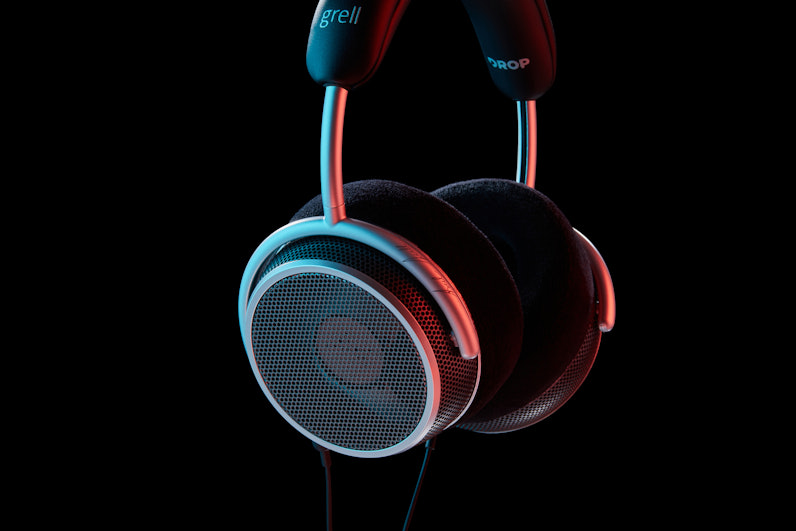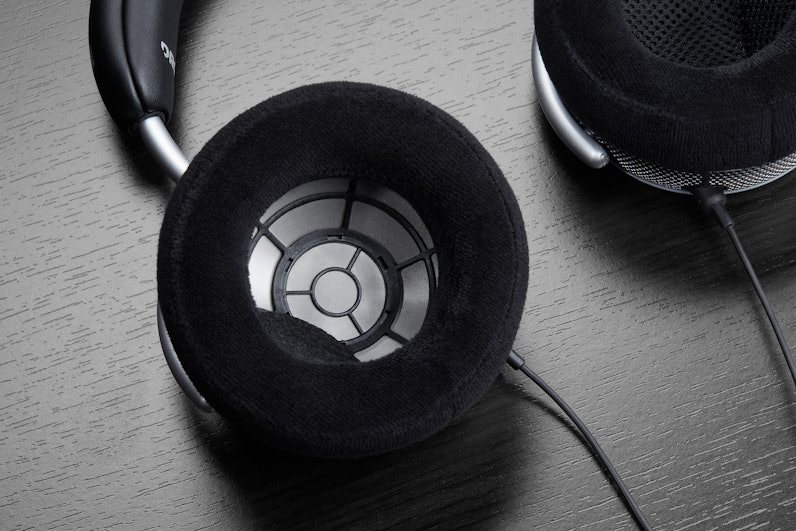Click to view our Accessibility Statement or contact us with accessibility-related questions















The Most Open Open-Back?
To minimize unwanted artifacts in the listening experience, it was important that the OAE1 signature headphones avoid reflecting any secondary sound waves back toward the ear. Much like sound waves bouncing off walls when speakers are played in an empty room, the echoes from the reflections off the headphone body can cause interference, leading to dips—and even worse, peaks—degrading the quality of sound and imaging.







search
close
Sort by: Newest
keyboard_arrow_down
JuliusCaesar
9
May 7, 2024
How big are the ear cups? I have large ears and wear hearings aids. Anyone know if the cups are big as the AKG K712 PRO and Sennheiser HD 800.
Dannyif
47
Keyboard Club Member
Apr 28, 2024
Does anyone know what the price range is for these headphones. Why would I request without a price range at the very least?
tutetibiimperes
266
Apr 9, 2024
I wonder what the impedance will be. Hopefully pretty high like most Sennheiser models, make it a good fit for the new Drop OTL tube amp.

Nutless
0
Apr 10, 2024
tutetibiimperesimpedance has nothing to do with sound quality. If you want the effect of a tube amp, you can just use parametric equalization, and achieve far better results, at that.

radpoodle
259
Keyboard Club Member
Apr 12, 2024
Nutlessthats not necessarily true. higher impedance generally means there is more room for louder listening while keeping a cleaner, undistorted sound. turning the volume up too high on lower impedance will distort more than on higher impedance. so at normal listening it may not matter as much but it can depending on what youre using the headphone/speaker for and at what volume. and the equipment you have plays a part of course. like most things its all about finding a balance between what fits the most customers without disappointing the ones outside of that middle ground. finding the top of the bell curve basically. unless youre going for being the very high end of course. where you can assume people have better gear, more powerful amps, better dacs that can take advantage of the higher imp more than the people who plug the headphones into their xbox controller or $200 chromebook.
i think. not an engineer or anything.... just an idiot who has spent too much on audio equipment over the years.
(Edited)

PiedPiper
24
Apr 9, 2024
Pleases release CSD diagrams at release so we can see how much resonance was subdued.
ConnorBig
133
Apr 8, 2024
Hopefully they take time an do some retuning and refining. A lot of people disliked it a lot at the recent cam jam.

Evshrug
4130
Keyboard Club Member
Apr 27, 2024
PiedPiperHonestly, I've been training at my new job as an eyeglasses lens technician for the past two weeks; I've not had time to do careful, structured A/B comparisons yet (I have off today, but I'm trying to build a piece of furniture, lol). From memory owning an HD 800 for 9 years, the HD 800 will still make micro details more apparent, especially highlighted by the stronger treble presence, but the OAE1 is no slouch and I can still distinguish multiple instruments and easily hear the improvement of going from AAC 256 kbps to Apple Music HiRes. Can I hear Paul McCartney play a wrong chord in "Hey Jude" at 2m:55s, and then make an exclamation in the background? Yes. The OAE1 is not an analytical headphone by nature, but it seems to take EQ well and increasing the treble would make harmonics more emphasized, potentially highlighting details in the fundamental midrange notes.
Trending Posts in Audiophile
AntonetteCBak
Tips for Setting Up a Trading Desk with a Laptop
Creating an efficient and organized trading desk with just a Best laptops for trading requires a strategic approach to maximize productivity and trading success. Whether you’re a beginner or a seasoned trader, having the right setup ensures seamless execution of trades, minimizes errors, and keeps you focused. Below are essential tips to set up a professional trading desk using a laptop. Invest in a high-performance laptop tailored to trading needs. Opt for a model with a fast processor (e.g., Intel i7 or AMD Ryzen 7), at least 16GB of RAM, and a solid-state drive (SSD) for quick data access. Ensure the laptop has multiple ports for connecting peripherals and a high-resolution display for crisp chart visibility. Trading often involves monitoring multiple charts, news feeds, and trading platforms simultaneously. Connect your laptop to external monitors using HDMI or USB-C ports to expand your workspace. Dual or triple monitor setups allow for better multitasking and a...
Nov 21, 2024

abhinavkumar
Company Information in Dubai
Get comprehensive company information in Dubai, including registration requirements, licensing options, and compliance guidelines. Whether you’re exploring free zones, mainland, or offshore setups, our expert resources provide insights to help you make informed business decisions. Navigate Dubai’s business landscape with clarity, from legal requirements to operational support for a successful establishment. For more details:- https://leelainternational.com/
Nov 21, 2024

Leafwise
Show off your carry / bag / case / setup for your Head-Fi gear ✨
As subject, what do y'all carry your gear in for out-and-about/day-to-day and then for travel, if anything other than pockets?
Nov 19, 2024
keegu22
More bass!
I currently have the the HD 6XX, which sound great but, I'm am looking to upgrade the power of the bass as i really enjoy punchy low end EDM music. Any suggestions in the $200-$300 price range would be awesome.
Nov 13, 2024

danielj9
Trying to add Topping LA90D amp to Topping A9D preamp
Any help would be appreciated...I added an amp to my streamer, dac, headphone amp/preamp system and am now not getting any music through the headphone jacks on the preamp - the specifics: Wiim Pro Plus - optical connection to - Topping D50 iii dac - TSR to XLR connection to - Topping A9D headphone amp/preamp (all worked fine as a headphone amp until I tried adding:) - XLR connection to - Topping LA90 D amp. Amp switches are set to bypass, stereo, low gain. In this configuration, I am not getting any music to either my SE or XLR headphone jacks. I made sure I switched the A9D to "preamp" and "xlr" modes. I have no idea what I might be overlooking or missing...any thoughts would be deeply appreciated! Thank you.
Nov 11, 2024

Tremuh
Trying to find new headset
I currently am rocking the beyerdynamic DT 990 Pros and have been for a while now, along with a go xlr! I was trying to see what other headset you guys recommend along with something to replace the xlr? Thank you!
Nov 7, 2024

aiden.miller
Mic not working pc38x
I just got my pc38x in the mail today and the out put is quiet but fine and I'm happy. But the mic will not work when on my Xbox series and I was wondering if this issue can be resolved or if the head set is not compatible with Xbox.
Nov 4, 2024


